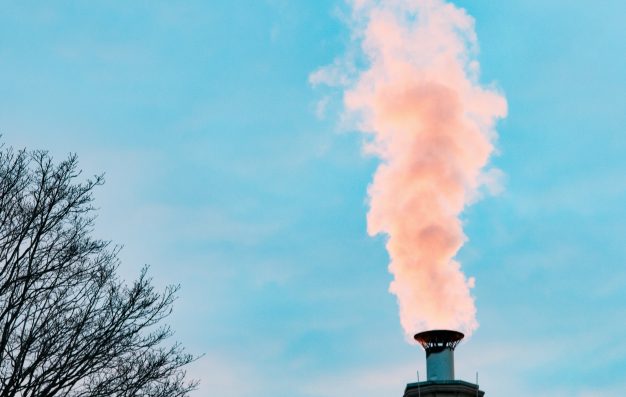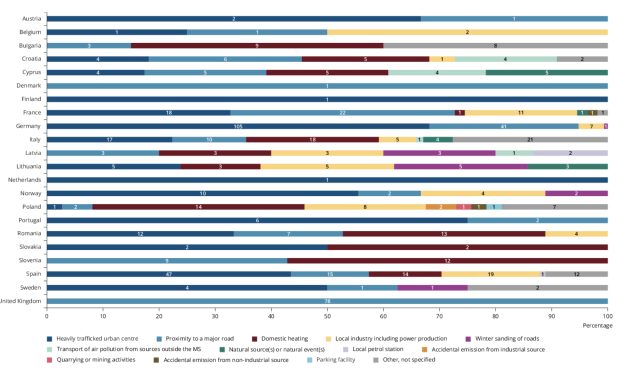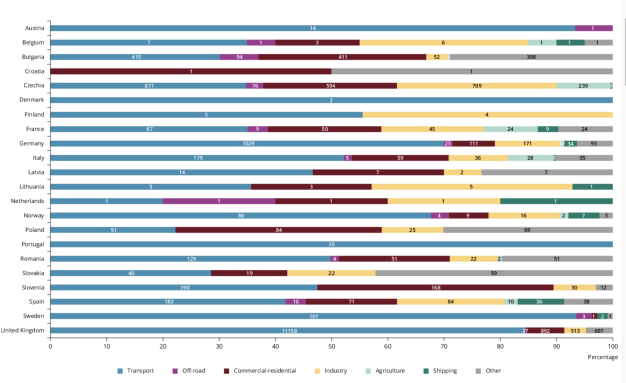
European Environment Agency: what are national authorities doing to improve air quality?
One of the biggest threats facing children in cities across the world is air quality. It is, in some cases, quite literally killing them. It’s a situation that the European Environment Agency (EEA) is intensely aware of, emphasising in the following briefing that air quality ‘remains a persistent problem in Europe, harming health and ecosystems’.
The briefing also reviews the status of individual countries’ air quality plans, put in place for situations where air pollution limits are exceeded. It also identifies the sources behind such exceedances.
The assessment covers 21 EU Member States, as well as Norway and the United Kingdom. The European-level assessment is complemented by case studies providing examples of measures that have led to improvements in air quality in seven European cities or regions, says the EEA.
- Over the period 2014-2020, 944 air quality plans were reported to the EEA. These plans were developed in response to EU air quality standards being exceeded, mainly in urban and suburban areas.
- Most air quality plans explicitly aim to protect health, with the majority focusing on reducing levels of nitrogen dioxide (NO2) and coarse particulate matter (PM10).
- Sixty-four per cent of all exceedances reported were linked to emissions from road traffic, which was the main cause of NO2 exceedances.
- Domestic heating was linked to 14 per cent of all exceedances and was the main cause of PM10 exceedances.
- Over two thirds of measures included in air quality plans focused on the transport sector. Only 12 per cent focused on commercial and residential energy sectors linked to domestic heating.
- Public awareness of air pollution is important for gaining support for action to improve air quality.
‘Air quality plans’
The EU’s ambient air quality directives set air quality standards for certain pollutants in ambient air to protect human health and the environment. If these values are exceeded, Member States are required to take necessary action to reduce the concentrations of air pollutants and prepare an air quality plan that sets appropriate measures. The aim is to keep the exceedance period as short as possible.
Air quality plans are a principal tool used by authorities to improve air quality, reduce emissions of air pollutants and deliver benefits to public health. In the period 2014-2020, 21 Member States submitted at least one air quality plan to the EEA (ETC/ATNI 2021), including information on:
- short-term action plans and programmes to improve air quality
- measures planned in the context of air quality plans
- exceedances of EU air quality standards that triggered the development of short-term action plans and air quality plans, and the emission sources that contributed to those exceedances
- scenarios of how measures might improve air quality.
A total of 944 air quality plans were reported. Of these, 59 per cent were reported to have been implemented, 15 per cent to be in their first year of implementation and 17 per cent to be under revision. This suggests that, while most plans were successfully implemented, a significant proportion needed further attention. The rest of the plans were in the preparation or adoption phase, or had been completed.
The majority of air quality plans aim to protect health, with most focusing on reducing levels of NO2 and coarse particulate matter (PM10). Only five per cent of the exceedances reported were of other pollutants, including fine particulate matter (PM2.5) ozone (O3), nickel in PM10, lead in PM10, cadmium in PM10, Sulphur dioxide SO2 and benzene (in descending order). A small number of plans explicitly aim to protect vegetation, including three focused on reducing O3 and ammonia in Spain, four on O3 in France and two on nitrogen oxides (NOX) in Italy. Most exceedances (65 per cent) were reported in urban areas, with 21 per cent in suburban areas and the remainder in rural areas.
Sources of air pollutants driving exceedances
Member States report on the sources of the pollutants for which standards are exceeded. Figure 1 provides an overview of these emission sources.
Figure 1. Emission sources driving exceedances of EU air quality standards across 20 Member States plus Norway and the United Kingdom, 2014-2020

Note: Data were not reported for Czechia, Estonia, Greece, Hungary, Iceland, Ireland, Liechtenstein, Luxembourg, Malta, Switzerland or Turkey.
More info…
Road traffic was the principal driver of the exceedances of NO2 reported. In fact, 64 per cent of all reported exceedances were linked to dense traffic in urban centres and proximity to major roads. For six countries, namely Austria, Denmark, Finland, the Netherlands, Portugal and the United Kingdom, road traffic was the only major source of exceedances reported. In Germany and France, road traffic was behind 95 per cent and 73 per cent of all exceedances, respectively. In contrast, in other countries, road traffic was a less important source, behind only eight per cent of exceedances in Poland, 15 per cent in Bulgaria and 20 per cent in Lithuania.
Domestic heating was reported to be the second most important source driving exceedances of air quality standards across Europe, linked to 14 per cent of total exceedances, and the principal driver of exceedances of coarse particular matter (PM10). Countries that reported domestic heating as a significant driver of exceedances include Slovenia, where 57% of exceedances were attributed to domestic heating, Slovakia (50 per cent), Bulgaria (45 per cent), Poland (38 per cent) and Romania (36 per cent).
Local industry was behind 10 per cent of reported exceedances across Europe. At the national level, local industry drove 50 per cent of exceedances in Belgium, 24 per cent in Latvia, 22 per cent in Poland and 20 per cent in France.
Exceedances of ozone standards were reported by Italy, France and Spain, and were related to transport in urban and rural areas.
Measures to reduce emissions of air pollutants
As part of their air quality plans to reduce concentrations of key air pollutants, Member States put in place measures to reduce emissions. Such measures may be enacted under the air quality plans put in place under the Ambient Air Quality Directives. Alternatively, measures may be enacted as part of national air pollution control programmes, which Member States have to update at least every 4 years in the context of the National Emission Reduction Commitments Directive.
Across all the countries that reported putting in place measures through the air quality plans required by the ambient air quality directives:
- 70 per cent of measures focused on the transport sector
- 12 per cent focused on commercial and residential energy sectors linked to domestic heating
- eight per cent focused on industry
- six per cent focused on shipping
- four per cent focused on the agricultural sector.
Figure 2 summarises the number of measures put in place by source of emissions/sector and country.
Figure 2. Measures put in place under air quality plans by target sector and country

Note: The number of measures put in place for each sector in each country are shown. These numbers are also expressed as percentages of the total number of measures put in place in each country. Data were not reported for Cyprus, Estonia, Greece, Hungary, Iceland, Ireland, Liechtenstein, Luxembourg, Malta, Switzerland or Turkey.
More info…
In terms of pollutants, 62 per cent of measures focused on reducing emissions of NO2, while 26 per cent focused on coarse (PM10) and 10% on fine (PM2.5) particulate matter. A small number of measures targeted benzo(α)pyrene (BaP).
The most common measures adopted to reduce concentrations of NO2, PM10, PM2.5 and BaP focused on traffic planning and management, representing 39% of all measures. Improving public transport was a common traffic management measure for reducing concentrations of all four pollutants. Other frequently reported measures include the management of parking spaces, speed limits, low-emission zones and modal shifts in transport.
Overall, 19 per cent of measures focused on public information and education through different media channels. Fourteen per cent of measures focused on the use of low-emission fuels for small-, medium- and large-scale stationary sources and mobile sources.
Figure 3 presents aggregate information on the type and number of measures put in place to improve air quality across all reporting countries, categorised into:
- Traffic
- Awareness raising
- Public procurement
- Fuels
- Industry
- Other
The level of the administrative authority responsible for putting measures in place varied: 86% were managed at the local level, 11 per cent at the regional level and only three per cent at the national level.
Air quality information and public awareness
Air pollution is recognised as the single largest environmental risk to public health, with most European citizens identifying the health impacts of air pollution as a very serious problem (European Commission, 2019). Public awareness and understanding of air pollution sources are important for gaining support for action to improve air quality. A lack of awareness of the health impacts of air pollution can create opposition to policies and measures to improve air quality.
Across Europe, authorities have met public opposition to some measures proposed to restrict road traffic or the domestic combustion of fuels for heating (ETC/ATNI, 2020). In other cases, citizens are actively involved in addressing air pollution, including through citizen science initiatives to monitor air quality and raise awareness (EEA, 2020).
As 76 per cent of exceedances occur in urban and suburban areas, cities play a key role in successful air quality management. Air quality plans often include a focus on public information and education, to increase awareness and promote shifts away from activities associated with the emission of air pollutants.
Several cities are developing innovative approaches to improve communication about air quality, increase public awareness and engagement, and encourage changes in behaviour (EEA, 2018). The level of public acceptance of measures to improve air quality is higher in cities where citizens are better informed about air quality issues and the health benefits of clean air.
Please click on the examples below to view air quality measures from across Europe.




